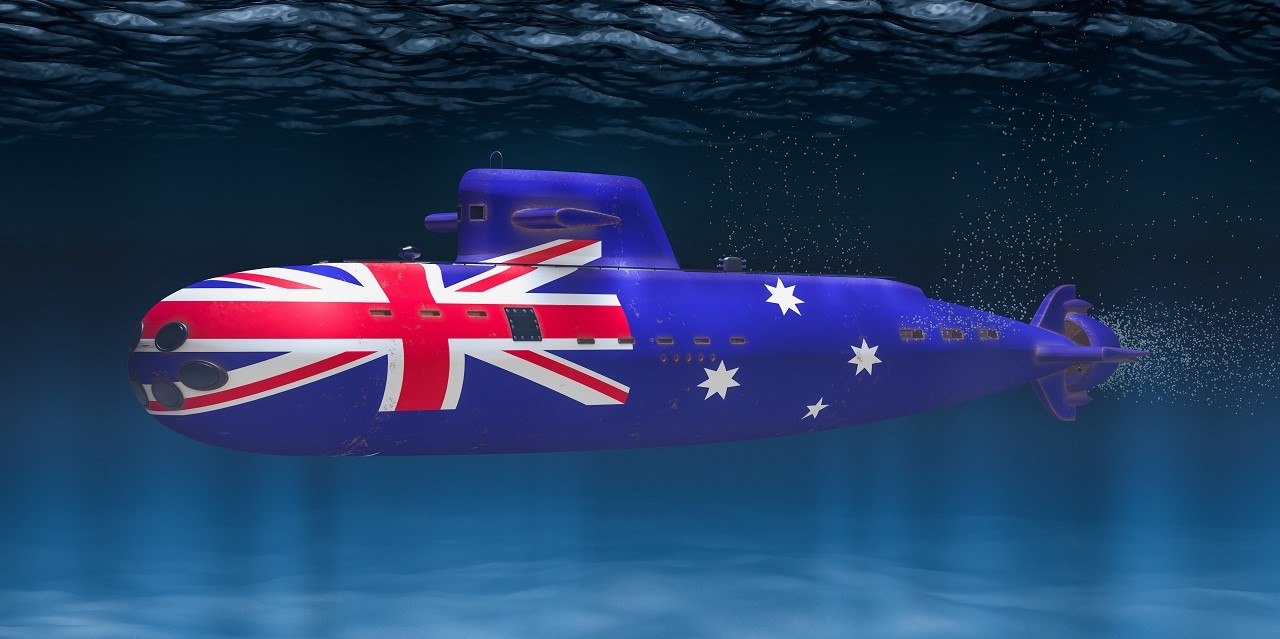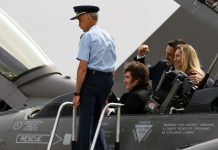US President Donald Trump told visiting Australian Prime Minister Anthony Albanese on Monday that his country would get submarines under a 2021 pact that the US president previously cast doubt on.
“The submarines that we’re starting to build for Australia are really moving along,” Trump told reporters alongside Albanese at the White House, adding that the deal was “really moving along very rapidly, very well.”
“We’ve worked on this long and hard, and we’re starting that process right now. And it’s really moving along very rapidly, very well.”
Meanwhile, US President Donald Trump signed a deal on rare earth minerals Monday with Australian Prime Minister Anthony Albanese.
The two leaders met at the White House to concentrate on a pair of areas — defense and critical minerals — in which Washington and Canberra are cooperating against what they view as an increasingly assertive China.
Albanese said the rare earths deal would lead to $8.5 billion in critical minerals projects in Australia and take relations to the “next level.”
The Australian premier has touted his country’s abundant critical minerals as a way to loosen China’s grip over global supplies of rare earths, which are vital for tech products.
Government figures show Australia is among the world’s top five producers of lithium, cobalt and manganese — used in everything from semiconductors to defense hardware, electric cars and wind turbines.
China is easily the world’s largest refiner of lithium and nickel, and has a near monopoly on the processing of other rare earth elements.
Analysts have said Australia is unlikely to challenge this dominance — but does offer a reliable, albeit smaller pipeline that lessens the risk of relying on China.
The Australian government said it and the US government would each invest more than $1 billion over the next six months, while the White House put the figure at $3 billion between the two countries.
Albanese had also been pushing for progress on the stalled 2021 AUKUS submarine deal between Australia, the United Kingdom and the United States.
Washington said earlier this year it was reviewing the deal for at least three Virginia-class nuclear attack subs signed under previous president Joe Biden, but Trump promised Australia would get them.
The AUKUS deal could cost Canberra up to US$235 billion over the next 30 years. It also includes the technology to build its own vessels in the future.
Australia also had a major bust-up with France after it canceled a multi-billion-dollar deal to buy a fleet of diesel-powered submarines from Paris and go with the AUKUS program instead.
The nuclear-powered vessels lie at the heart of Australia’s strategy of improving its long-range strike capabilities in the Pacific, particularly against China.
But the Trump administration said in June it had put AUKUS under review to ensure it aligned with his “America First agenda,” saying it needed to ensure the United States had enough of the subs.
China loomed large over both of the key issues in the talks.
Australia has touted itself as a key US ally against China’s territorial assertiveness in the Asia-Pacific region, from Taiwan to the South China Sea.
On China, Australia announced plans for a strategic reserve of critical minerals to provide to “key partners” such as Washington to help relax Beijing’s chokehold.
Trump this month accused China of pressuring trade partners with new rare export curbs and threatened 100-percent tariffs in response.
Australia Commits US$8B For Nuclear Submarine Shipyard Upgrade
Australia has allocated an initial Aus$12 billion (US$8 billion) to modernize shipyard infrastructure for its upcoming fleet of nuclear-powered submarines, according to a government announcement last month.
The funds will be invested over the next decade to redevelop a key shipbuilding and maintenance hub in Perth, Western Australia, Defence Minister Richard Marles explained.
This initiative targets Perth’s Henderson Defence Precinct, following Australia’s 2021 AUKUS agreement with the United States and Britain to equip its navy with nuclear-powered submarines.
The project forms a cornerstone of broader military reforms aimed at enhancing Australia’s long-range strike capabilities amid China’s growing military presence in the Pacific region.
Lacking existing facilities for nuclear submarine maintenance, Australia plans to acquire at least three U.S. Virginia-class submarines within the next 15 years and eventually produce its own domestically.
“Henderson is very much an AUKUS project. It is where we will do sustainment and maintenance of our future submarines,” Marles told a news conference.”
I have got no doubt this decision will be welcomed in the United States, as it will be welcomed in the United Kingdom, because it is another step down the AUKUS path,” the minister said.
The choice reflects Australia’s independent evaluation of its “strategic landscape” and the defense capabilities required “to meet that moment,” he added.
The upgrades will outfit Henderson with secure dry docks for nuclear submarine servicing, plus infrastructure for constructing landing craft and, in time, Japanese Mogami-class frigates, according to Marles.
The U.S. is also anticipated to utilize the facility for maintaining its own nuclear-powered submarines.
Overall development costs for the Henderson Defence Precinct may climb to around Aus$25 billion, the minister noted.

This shipyard expansion continues Australia’s series of significant defense enhancements.In August, the country revealed plans to acquire 11 Mogami-class frigates from Japan’s Mitsubishi Heavy Industries for its navy.
Over the coming decade, Australia will invest Aus$10 billion in these stealth frigates to grow its major warship fleet from 11 to 26 vessels.
While the initial three frigates will be constructed abroad, the remainder are slated for production in Western Australia.
Just last week, the government unveiled a Aus$1.7 billion investment in “Ghost Shark” underwater attack drones, with the first units slated to become operational in January.
The AUKUS submarine initiative—central to Australia’s defense posture—faces scrutiny over its projected cost of up to US$235 billion across 30 years, per official estimates.
The Trump administration had reportedly initiated a review of AUKUS to align it with its “America First agenda,” amid concerns that U.S. submarine production capacity may struggle to meet both Australian and domestic demands.
Canberra, however, remains optimistic about the partnership’s viability. According to The Washington Post, U.S. Secretary of State Marco Rubio assured Marles privately two weeks ago that AUKUS would move forward.
Marles avoided commenting on the report directly.In conversations with ABC, he described an “enormous sense of positivity about the role that AUKUS can play for the United States” across all his exchanges with the Trump administration.
Since May 2022, the government has committed an additional Aus$70 billion to defense over the next decade, incorporating this latest shipyard funding.
Via: Agence France-Presse




